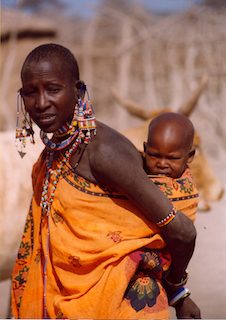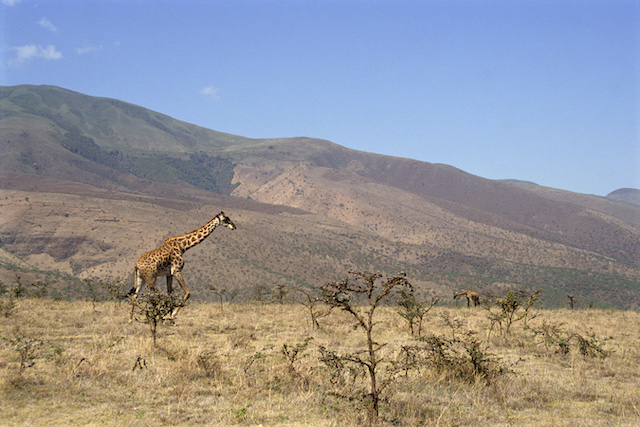Discovering The Wonders Of Masai Mara
The Masai Mara national reserve, an expanse area of land and wild life, is one of the most celebrated safari spots in the world. Situated in south western Kenya, this famous reserve is part of the larger Mara-Serengeti eco system, which spans across both Kenya and Tanzania. With its breath taking land scapes, diverse wild life, and rich heritage, the Masai Mara lures people from all corners of the globe. This article delves into the myriad spots of Masai Mara, offering tips for those seeking to explore this magnificent reserve.
Richness of Masai Mara
The primary draw of Masai Mara is that is is very diverse. The reserve is home to a vast array of wild life, including the big five, which is lion, leopard, elephant, buffalo, and rhino. Each year, the Masai Mara plays host to the Great Migration, where over 2m wilde beest, zebras, and gazelle travel from the Serengeti in search of fresh grazing grounds. This natural event, which occurs from July to October, is a sight to behold, luring thousands of visitors who gather to witness the dramatic river crossings and wild life play.
In addition to the Big Five, Masai Mara boasts of many other species, such as cheetah, giraffe, hippo, and numerous bird species, making it a paradise for wild life lovers and photographers. The diverse lands within the reserve, including open plains, wood lands, and river forests, support this wide variety of fauna.
Cultural meets with the Maasai people
A visit to Masai Mara is not just about the wild life. It also offers a unique opportunity to engage with the local Maasai people. Known for their customs, attire, and rich traditions, the Maasai have lived with wild life for centuries. Many safari tours include visits to Maasai villages, where guests can learn about their way of life, traditional crafts, and social structures.
Visitors often see traditional songs and dances to experience the Maasai culture. These interactions foster a deeper appreciation for the delicate balance between human existence and wildlife conservation in this stunning region. Supporting local communities through cultural tourism helps promote sustainability and preservation of the Maasai heritage.
Ideal safari experiences in Masai Mara
When it comes to exploring the Masai Mara, a variety of safari options cater to different preferences and budgets. Game drives remain the most popular way to experience the reserve, allowing visitors to traverse the vast landscapes and spot wildlife in their natural habitats. Guided by experienced rangers, these drives offer invaluable insights into animal behavior, ecosystems, and conservation efforts.
For a more intimate experience, walking safaris are also available. Accompanied by knowledgeable guides, these excursions allow travelers to explore the flora and fauna up close, providing a different perspective on the wilderness. Additionally, hot air balloon safaris offer a breathtaking aerial view of the Masai Mara, particularly during the early morning hours when the landscape is shrouded in mist.
Accommodations and amenities in Masai Mara
Masai Mara caters to a wide range of accommodation preferences, from luxury lodges to budget-friendly tented camps. Many lodges are strategically located near water sources or key wildlife areas, enhancing the chances of wildlife sightings right from your accommodation. Eco-friendly lodges are particularly popular, emphasizing sustainable tourism practices while providing guests with unparalleled comfort and service.
For those looking for a more authentic experience, camping options are available, ranging from basic to semi-luxury. Staying in a tented camp offers a unique experience of falling asleep to the sounds of the African night, all while being surrounded by nature.
Best time to visit Masai Mara
The best time to visit Masai Mara largely depends on what you hope to experience. The dry season, from June to October, is ideal for wildlife viewing, as animals congregate around water sources, making them easier to spot. This period coincides with the Great Migration, a highlight for many travelers.
However, the wet season, from November to May, transforms the landscape into a lush paradise. This period offers a unique perspective on the reserve, with vibrant greenery and fewer tourists. Birdwatching is particularly rewarding during this time, as migratory species arrive, adding colour and life to the skies.
Conservation efforts in Masai Mara
As one of the most important wildlife reserves in Africa, Masai Mara faces various conservation challenges, including poaching, habitat loss, and human-wildlife conflict. Numerous organizations and local communities are working diligently to combat these issues, implementing initiatives to protect both the wildlife and the Maasai way of life.
Community-based conservation projects are gaining traction, allowing local people to benefit from tourism while fostering a sense of stewardship for the land and its inhabitants. By participating in these initiatives, visitors can contribute to the ongoing preservation of the reserve and ensure that future generations can enjoy its wonders.
Planning your trip to Masai Mara
When planning your trip to Masai Mara, it is essential to consider several factors to enhance your experience. Determine the duration of your stay. Most visitors spend around 3 to 5 days to fully explore the reserve and partake in various activities.
Booking a safari package that includes guided tours, accommodations, and meals can simplify your travel plans. Many tour operators offer customizable packages tailored to individual preferences, ensuring that you get the most out of your visit.
Additionally, consider the necessary travel logistics. The nearest major city is Nairobi, from where you can arrange domestic flights to airstrips within Masai Mara. Alternatively, road trips provide a scenic approach, although they may take longer.
Health and Safety Considerations
Traveling to Masai Mara requires some health and safety considerations. It’s advisable to consult with a healthcare provider about vaccinations and medications, such as anti-malarial drugs, before your trip. Carrying a basic first aid kit and adhering to safety guidelines while on safari is also recommended.
Wildlife encounters are thrilling, but it’s important to respect the animals and maintain a safe distance. Following your guide’s instructions will ensure a safe and enjoyable experience.
The diverse Mara
Masai Mara is a treasure trove of natural beauty, cultural richness, and thrilling wildlife encounters. Whether you are an avid photographer, a nature lover, or simply seeking adventure, this stunning reserve offers something for everyone. From witnessing the Great Migration to engaging with the Maasai people, the experiences that await in Masai Mara are sure to leave lasting memories.
By choosing to explore and support the conservation efforts in Masai Mara, you not only enrich your own travel experience but also contribute to the preservation of this magnificent ecosystem for generations to come. So pack your bags and prepare for a journey into the heart of one of Africa’s most iconic wild life parks.





